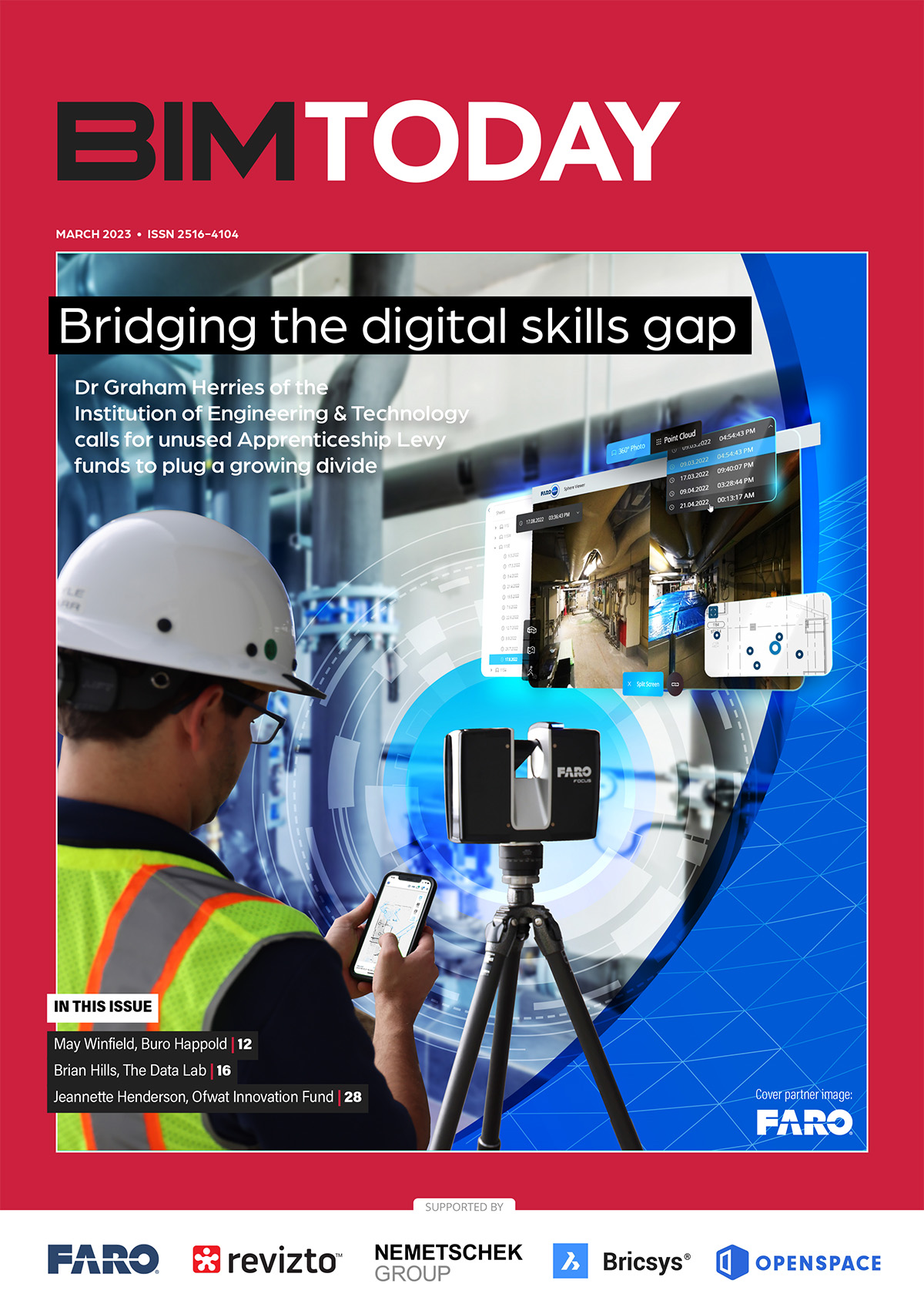Welcome to BIM Today March 2023. As the digitalisation of the industry continues apace, our cover story by Dr Graham Herries, chair of the Institution of Engineering & Technology’s Innovation & Skills panel warns that a lack of technical skills is holding back innovation and productivity
Dr Herries argues that the government should look at using “wasted” funds from the Apprenticeship Levy to help firms bridge the growing digital skills gap.
May Winfield of Buro Happold discusses the transformational change brought about by technology and more collaborative ways of working, and the issues of liability and risk they bring.
We also hear from Brian Hills of The Data Lab, who discusses the importance of using data ethically in the built environment, and Rebecca De Cicco of Aureco on the journey towards information management across an asset’s lifecycle.
Allan Binns of Ryder Architecture calls for the reinvention of the principal designer role, David Frise of the Building Engineering Services Association says that in order to tackle carbon, we must find where it comes from, and Jeannette Henderson, principal of the Ofwat Innovation Fund, outlines the Water Discovery Challenge.
There is much more besides, from the business case for sustainable development and the legal basics of BIM in contracts to information management across an asset lifecycle and the use of a geospatial portal to improve collaboration at Hinkley Point C.
Here’s a selection of what’s in store:
Wasted government funds should be directed to nearly half of engineering firms suffering from a digital skills gap, says the Institution of Engineering & Technology (IET), as a digital skills deficit is costing the UK economy £63bn a year.
The last decade has seen a significant uptake in digitisation and the implementation of more collaborative processes in our industry. The question is: how has this happened, in an industry not generally known for either its fast, transformational change in construction projects, or collaborative mindset? May Winfield of Buro Happold takes a look.
Data use in the built environment can change lives for the better – but only if it’s trusted and used ethically, says Brian Hills, CEO of The Data Lab.
Rebecca De Cicco of Aurecon looks at the journey toward information management across the entire asset lifecycle.
The statutory role of principal designer has failed to deliver the impact envisioned by legislation. But Allan Binns, safety director at Ryder Architecture, believes that with some reinvention, “principal designer 2.0” can bring real value to projects.
The Water Discovery Challenge is calling on innovators from outside the water industry to put forward new ideas for tackling the sector’s biggest challenges. Jeannette Henderson, principal of the Ofwat Innovation Fund, explains.
To save carbon in the built environment, you first need to find it, says David Frise, chief executive of the Building Engineering Services Association (BESA).
In the construction industry, many are still not taking sustainability seriously enough. Consequently, any genuine business case for sustainable development can sometimes get lost in the mix. Nemetschek’s CEO Yves Padrines explains why this needn’t be the case.
Sustainable materials specialist Sam Burdett of Sandberg discusses his experience of being part of ZERO as it looks to drive sustainable change to tackle the climate crisis in construction.
EDF has used enterprise GIS from Esri UK to create a geospatial portal for Hinkley Point C (HPC) nuclear power station, one of Europe’s largest and most complex construction projects.



